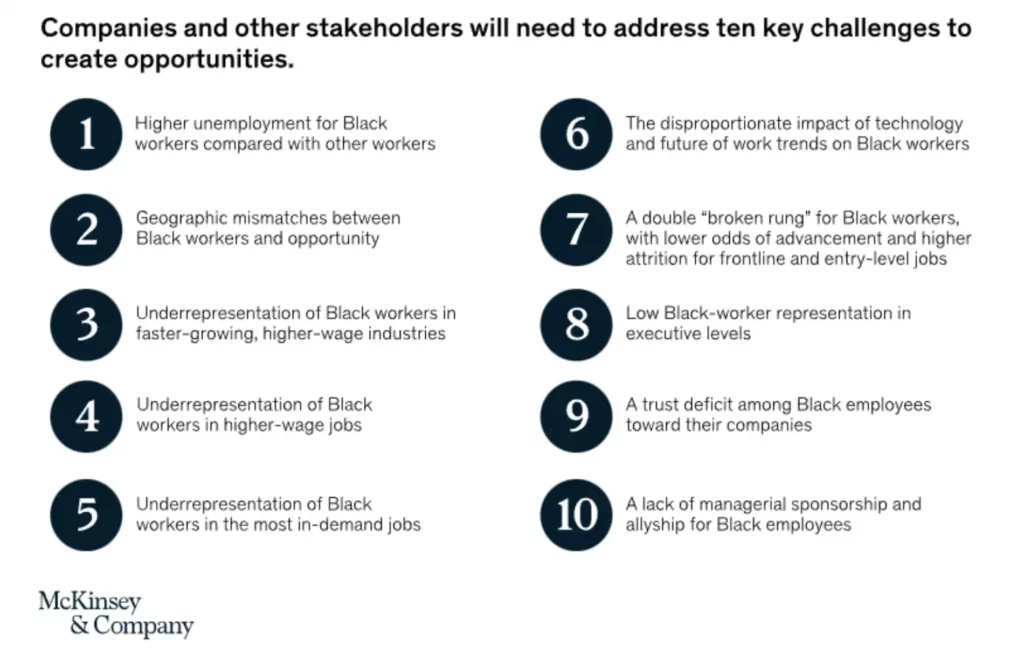Did you know that Black workers have lower wages, worse prospects, and higher unemployment rates compared to other workers?
That’s right. Research from McKinsey shows geography, job-type, industry, and everyday workplace and culture challenges are among some of the culprits threatening equity for Black workers.
Given the depth and complexity of these challenges, HR teams and company leaders alike will need to collaborate to see real, lasting change. In addition, with 40% of remote job postings allowing international remote work, cultural sensitivity, diversity and inclusion efforts are more important than ever.
In honor of Black History Month, we’d like to spend some time discussing the importance of cultural sensitivity and how to improve it in the workplace. Let’s take a look.

What is Cultural Sensitivity?
According to the American Psychological Association (APA) Dictionary of Psychology, cultural sensitivity refers to:
“The awareness and appreciation of the values, norms, and beliefs characteristic of a cultural, ethnic, racial, or other group that is not one’s own, accompanied by a willingness to adapt one’s behavior accordingly.”
In other words, cultural sensitivity is a set of skills that can help us learn more about and understand individuals who are different from ourselves. The key to flexing these skills? Equipping ourselves with the ability to adapt our behavior and serve underrepresented people within our communities and workplaces.
According to McKinsey, companies and other stakeholders will need to develop cultural sensitivity to address ten core challenges that are threatening equal opportunities for Black workers. They include:

While these challenges won’t go away overnight, there are several action steps you can take to play your role in the DEI process. Let’s take a look at five steps you can implement to improve cultural sensitivity in the workplace.
1. Consider Your Workplace Setting
Employers are faced with a risk vs reward decision as they strive to improve existing workplace settings, namely by moving toward remote and hybrid work models.
While these new work models can provide a better work-life balance, a personalized employee experience, and greater flexibility, they also have the potential to have a disproportionately beneficial influence on DEI efforts and performance.
From creating an unequal playing field to exacerbating in-group vs out-group dynamics, poorly designed remote and hybrid work models can reduce inclusiveness and lead to high turnover.
The focus? Remember that the type of work and needs do and should vary for in-person team members versus those that work online. Get clear on mutual expectations by setting both one-on-one and team meetings to ask how you can best support your staff before initiating your new online setup.
To set your team up for success, ask everyone about their preferred communication channels and methods — and do your best to implement them.
We also recommend initiating an “open door” policy to encourage Black team members to come to you (or the appropriate personnel) with any challenges they may face.
One crucial tip: Never make an employee feel bad for asking a question or being over-communicative. Always do your best to support team members no matter how many needs or questions they may have.
2. Create Policies and Guidelines for Cultural Awareness
HR policies are an industry norm, but how many of them are actually benefiting Black employees and don’t just exist to check off a box of a seemingly perfect work environment?
To truly become culturally sensitive, you need to be bold about creating and implementing policies and guidelines meant to promote cultural awareness — with an extra focus on “implementation”.
If you’re unsure which policies and guidelines to generate, work with a DEI specialist who’s been in the industry for a while and has reputable testimonials to back up their strategies.
After they’ve helped you design appropriate policies and guidelines, consider hiring an editor who specializes in cultural awareness to double-check your new rules and edit them accordingly.
Use HR software to house your new policies, track employee satisfaction surveys, and log your cultural sensitivity efforts as your company evolves.
It’s also important to offer additional support and benefits to Black workers with disabilities. That might mean assigning them their own dedicated HR rep or creating policies that support their need for extra time off, extended lunch breaks, or the ability to step away from their desks to take medication or perform physical therapy.
You might also offer specialized benefits, such as pet insurance for employees with service animals or discounts on life-saving medications, such as insulin and EpiPens.
3. Implement Training and Team Building
Cultural sensitivity training helps your team learn about and understand Black and underrepresented employees, so they can develop the necessary skills to work together cohesively and fairly. Some examples of skills the whole team should learn include:
- Welcoming diverse perspectives
- Encouraging others to be themselves and express their opinions
- Celebrating unique cultural differences
- Active listening
- Mutual trust and respect for employees from different backgrounds
- Recognizing the efforts and achievements of Black workers
- Treating everyone with fairness and kindness
- Encouraging active participation during team communication, meetings, and brainstorming sessions
While it’s imperative to host the majority of these training sessions in-person or via video conferencing software where everyone can participate, we also recommend creating some modules that employees can access in their free time, too.
To speed up the process, use a text-to-speech platform to create on-demand training videos and an AI writer to create internal training documents and quick guides.
We also recommend implementing an on-going training schedule so your team can stay up-to-date on the most relevant DEI practices. This is an effective way to keep DEI top of mind so your team can continuously work toward improving their cultural sensitivity.
If you still have employees struggling to understand how to be an advocate for minority workers, offer to pull them aside to examine what the problem could be. They likely need more education and practical action steps to help them marry the concept of DEI with their physical job responsibilities.
On that note, you’ll also need to stress to your team that there will be negative consequences and disciplinary action for employees that exhibit desensitivity or that express hatred or disrespect to minority workers.
For a complete list of skills to train your team on and to discover how to approach disciplinary action, meet with a DEI specialist for support.
4. Remain Flexible and Promote Understanding of Different Cultures
If you want to create a culture of inclusivity at your organization, you have to be conscious of the different cultures that exist within your company and make sure everyone has a voice.
Promote cultural understanding by remaining flexible. For instance, be flexible about time-off requests from employees that want to celebrate special holidays and events with their loved ones. An employees hours tracker, such as Connecteam, has a time off management feature where you can easily set up and manage your company’s time off policies in order to facilitate employee time off requests for special holidays. You might also consider creating an inclusive team holiday calendar that recognizes celebrations and holidays that occur all over the world.
Clubs and DEI cohorts can also encourage a sense of community to help Black and underrepresented employees feel comfortable in the workplace.
For inspiration, take a look at some of Samsara’s diversity initiatives. From clubs and employee resource groups (ERGs) to team member spotlights via social media, the pioneer company in cloud operations and video-based safety prioritizes building a strong DEI culture where everyone feels welcome.
5. Encourage Team Members to Start a Workplace Culture Sensitivity Task Force or ERG
As an extra measure of cultural sensitivity support, consider encouraging employees to start an ERG or workplace culture sensitivity task force.
ERGs and task forces are voluntary, employee-led resource groups with members who share characteristics, such as cultural backgrounds, gender, or interests. Their mission is to advocate for and support their members with resources that can help them thrive personally and professionally.
If your employees agree to start one or several ERGs, make sure they have the ability to meet, support, and communicate with members throughout the workday (virtually and/or in-person) as needed.
Be sure to also encourage members to come to company leadership if they need additional support promoting DEI initiatives or coming up with solutions to DEI challenges.

Wrap up
Cultural sensitivity, diversity, and inclusion efforts are more important than ever — and we commend you for taking the time to learn more about them today. To celebrate Black History Month, we’d like to invite you to take a close look at the current cultural sensitivity skills your team exhibits in the workplace.
Where are they falling short? Where can training, education, and implementation help fill in the gaps? Use today’s guide to help you analyze and adjust your current initiatives.
For good measure, here’s a quick look at the steps we covered today:
- Consider Your Workplace Setting
- Create Policies and Guidelines for Cultural Awareness
- Implement Training and Team Building
- Remain Flexible and Promote Understanding of Different Cultures
- Encourage Team Members to Start a Workplace Culture Sensitivity Task Force or ERG
That’s it for now! Are you ready to improve your team’s cultural sensitivity skills?


